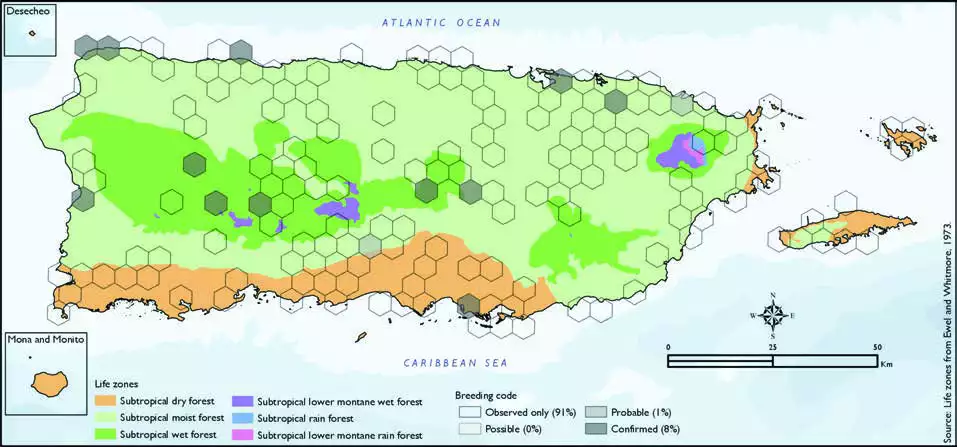Snowy Egret
Description
The snowy egret (Egretta thula) is a small white heron. The genus name comes from Provençal French for the little egret, aigrette, which is a diminutive of aigron, 'heron'. The species name thula is the Araucano term for the black-necked swan, applied to this species in error by Chilean naturalist Juan Ignacio Molina in 1782.
Adult snowy egrets are entirely white apart from the yellow lores between the long black bill and the eye, black legs, and bright yellow feet. The nape and neck bear long, shaggy plumes known as aigrettes. Immature snowy egrets have duller, greenish legs.
Distribution & Habitat
The Snowy Egret occurs through most of the Western Hemisphere
including the West Indies
(Raffaele and others 1998). It is a
common and permanent resident
in Puerto Rico and can be seen
regularly at the Boquerón Nature
Reserve and the salt fl ats of
Cabo Rojo (Oberle 2018). It is
also present on Culebra and
Vieques islands (Ventosa-Febles
and others 2005), in the latter
being common during winter
and spring, uncommon in fall,
and rare in summer (Gemmill
2015). Habitat includes mostly
freshwater swamps, riverbanks
(Raffaele and others 1998),
lagoons, marshes, ponds, mangroves, and salt fl ats (Oberle
2018). The atlas fieldwork
yielded a total of 232 records
within 158 hexagons or 33
percent of the 479 total hexagons
(see map). Of the 158 where this
species was found, breeding met
the atlas definition of confirmed
in 8 percent (12) of the hexagons
and probable in 1 percent (2),
while the species was observed
in 91 percent (144) of the
hexagons but without evidence
of breeding (see map). Snowy Egret distribution. The map shows the highest breeding code by hexagon and overlaying the ecological life zones in
Puerto Rico. Note: percentages may not total 100 due to rounding.

Breeding Habits
Previously published reports indicate that the Snowy Egret
breeds from April to July and
also in October (Raffaele and 149Snowy Egret/Garza Blancaothers 1998). Nesting is often colonial with other heron species
(Biaggi 1997, Oberle 2018,
Raffaele and others 1998), and
the nest is made of sticks and
usually built in mangroves and
swamps (Oberle 2018, Raffaele
and others 1998). Atlas results
show that this species breeds
from February to July with the
most breeding activity during
March, April, and June (see
chart). Overall, the breeding
activity peaks during March and
June, and mostly takes place
within the subtropical moist
forest life zone (see chart). Results show that this species
breeds mostly in lowlands within
the subtropical moist forest
life zone (64 percent of the
hexagons) (see table), but it also
breeds in subtropical wet and
subtropical dry forest life zones
as well (29 and 7 percent of the
hexagons, respectively) (see
table and map).
Conservation
The current overall population trend of the Snowy Egret
is described as increasing.
However, some populations may be stable, and others have
unknown trends (Wetlands
International 2012). This species
is currently listed as a species
of least concern by the IUCN
(BirdLife International 2016).
Locally, this species is not
listed in any of the threatened
categories of PRDNER and
USFWS. In Puerto Rico, the
Snowy Egret has a protected
habitat in land of 4 percent or
15 km2 of the total area covered by the hexagons where evidence
of breeding was found for this
species (335 km2).
Related Species
Family:
heron